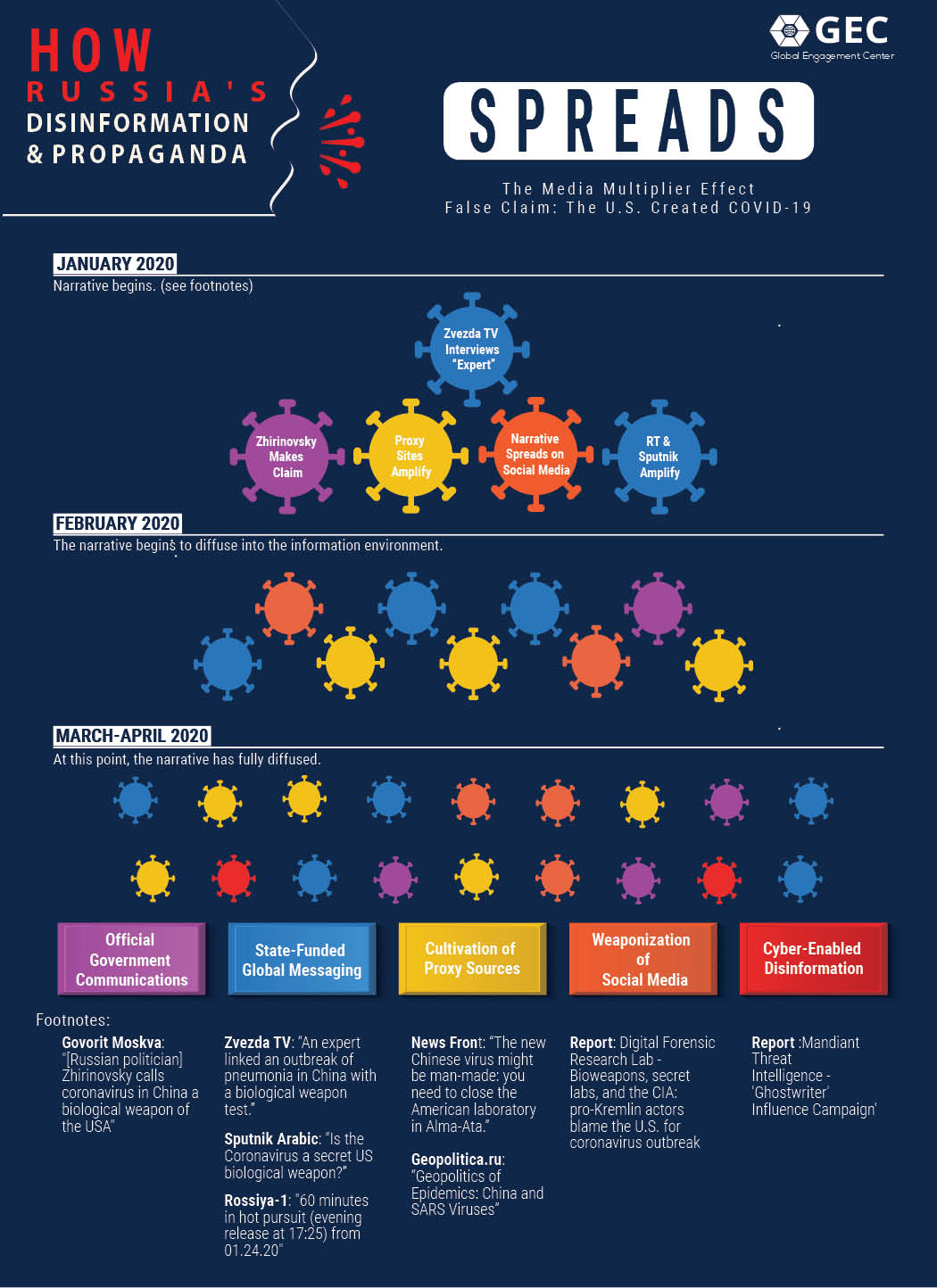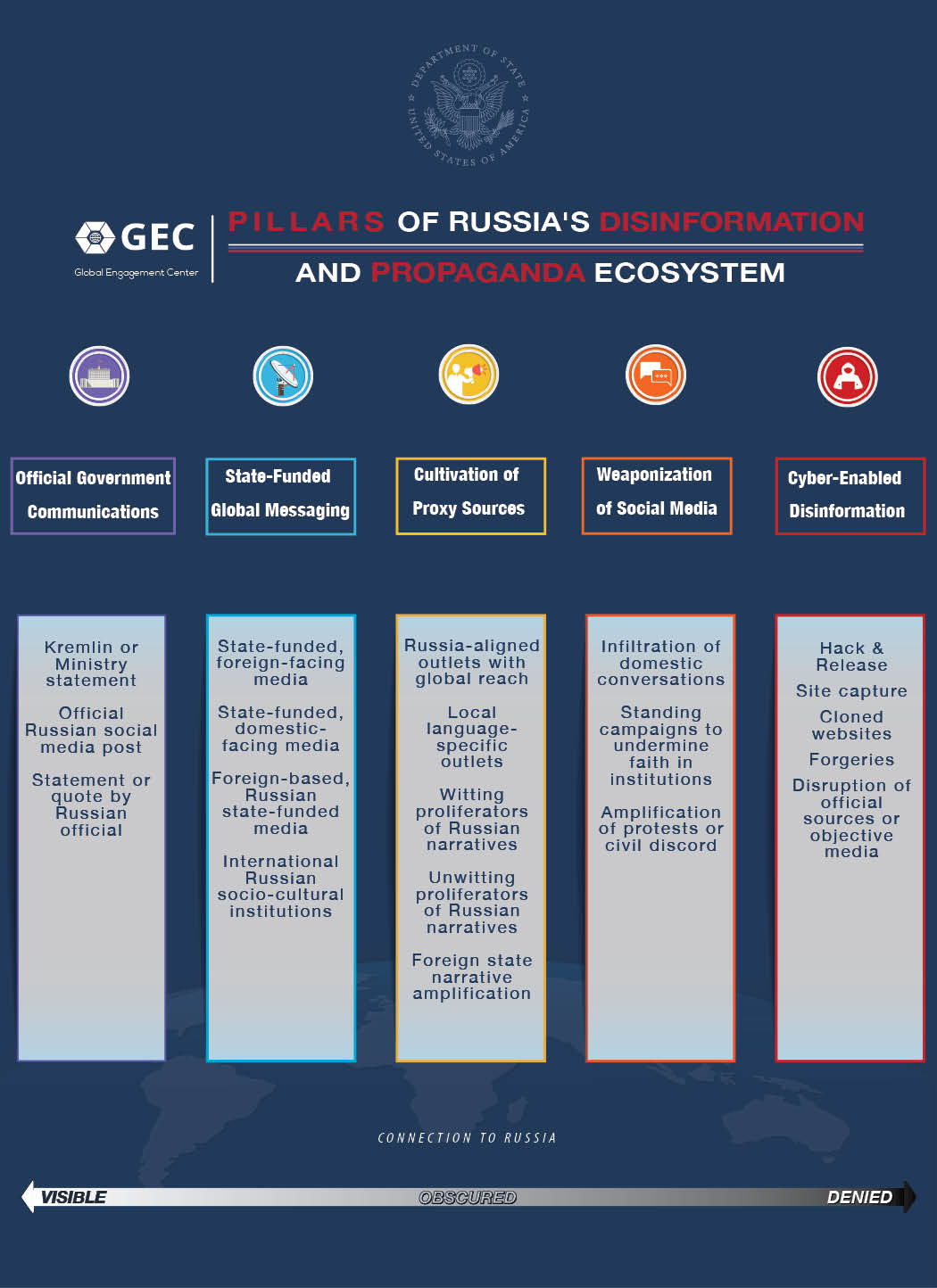U.S. Global Engagement Center combats disinformation and propaganda
THE WATCH Staff
The United States Congress established the Department of State’s Global Engagement Center (GEC) in 2017 to lead and coordinate interagency efforts to combat propaganda and disinformation from Russia, Iran, the People’s Republic of China (PRC) and nonstate foreign terrorist groups.
With its new mandate and expanded resources, the GEC established threat teams, including a Russia Team, China Team, Iran Team and Counterterrorism Team. The GEC also created an Analytics and Research Team and a Technology Engagement Team to use the latest data analytics tools and technology to ensure success.
Propaganda is generally defined as the selective use of information, including false information, and the promotion of nonrational arguments for political effect. Disinformation is defined as the creation and dissemination of false content and/or manipulated information to deceive and mislead audiences.
Russia, the PRC, Iran and foreign terrorist organizations use propaganda and disinformation to mislead audiences, but they differ in their goals and tactics, according to the GEC’s research and data science. For example, the Kremlin aims to drive a wedge between the U.S. and its allies and partners and also to weaken democratic institutions. Its tactics include running long-term campaigns against targets while exploiting new opportunities presented by civil unrest and instability. Russia uses social media and unattributed websites to increase the reach of its disinformation and propaganda and to manipulate foreign audiences. Russia has expanded the scope of its targeting beyond Europe and the U.S. to include countries in Africa and Latin America.

Meanwhile, the Chinese Communist Party (CCP) seeks to shape the information space to its advantage. The CCP is pursuing a comprehensive and coordinated influence campaign to advance its interests and undermine those of the U.S., through a range of political, economic, military and information tools. Its propaganda apparatus is a critical component in promoting and maintaining the CCP’s narrative domestically and globally. The CCP spends billions of dollars developing and expanding its international information infrastructure and the global footprint of its state-run propaganda machine. The CCP also exploits its economic influence to promote Beijing’s global vision.
For Iran, the main aim is advancing the regime’s geopolitical goals across the Middle East and beyond. The Iranian government works to undermine U.S. policy and drive wedges between the U.S. and its allies by undercutting diplomatic and security partnerships. Conversely, it presents a false-positive image of events and circumstances within Iran. To advance its goals, Iran leverages a combination of traditional and social media.
Also of concern are violent extremist organizations (VEOs). They vary in their methods while vying for attention by amplifying shocking images or messages to recruit followers and/or undermine local security services. This differs from state actors, which work from a unified strategy with a set of coherent goals. Additionally, VEOs face logistical obstacles, often have less funding than state actors and have local law enforcement or other organizations working to thwart their efforts. VEOs tend to focus on spreading their ideology, recruiting members and acquiring funding.
The GEC counters foreign propaganda and disinformation in various ways, including:
- Using data analytics and technology to deepen its understanding of propaganda and disinformation campaigns.
- Analyzing attempts by adversaries and competitors to target vulnerable foreign audiences, and sharing this information with partners and allies.
- Building the technical skills of civil society and nongovernmental organizations, journalists and other local actors best positioned to expose and counter the spread of disinformation.
- Partnering with diplomatic missions to share fact-based and historically accurate information via transparent mechanisms.
- Building partnerships among U.S. government agencies, private industry, foreign allies and civil society.
The GEC’s Analytics and Research Team uses data analytics, message testing, subject matter expertise and public opinion polling to help its global network of partners counter foreign propaganda and disinformation. With this data, the GEC provides timely and actionable insights. Its analysis of social and online media data allows it to perform the critical task of identifying inauthentic activity on social media.
The GEC’s data scientists and subject matter experts also have tracked state-sponsored disinformation campaigns related to COVID-19, which seek to exploit fear and uncertainty worldwide. Russian, Chinese and Iranian disinformation actors have promoted false narratives, including claims that the U.S. caused or exacerbated the pandemic.
Additionally, the GEC’s Technology Engagement Team leads groundbreaking efforts to identify, test and implement new technologies against disinformation and propaganda. To date, the GEC has tested 20 unique technologies and shared this information on its platform, Disinfo Cloud. The GEC has over 200 tools under evaluation on Disinfo Cloud, which can be accessed by more than 1,100 technology experts and users.
The GEC’s Technology Engagement Team also identifies new counter-disinformation technologies by hosting two-day Tech Challenges in partnership with foreign governments. For example, in 2019, Semantic Visions, a Czech Republic-based tool that enables counter-disinformation specialists to spot and assess emerging adversarial narratives online, won the Tech Challenge and was awarded funding.
Another vital element of the GEC’s work is exposing the tactics of state actors and shining a light on nefarious activities. In August 2020, the GEC released the special report, “Pillars of Russia’s Disinformation and Propaganda Ecosystem,” as part of a U.S. government effort to help allies and partners understand and counter Russian disinformation campaigns. The report focuses on proxy sites, an often-overlooked part of the disinformation ecosystem. These sites play a significant role in elevating Russia’s disinformation and propaganda because they appear to be independent and unconnected to Russia, lending credibility to the Kremlin-aligned disinformation they spread. The sites create and amplify Kremlin-aligned disinformation, which is then republished by other proxy and fringe sites, creating an echo chamber of disinformation.
The GEC also conceives and implements programs that raise awareness about state actors’ tactics to manipulate the information space. The programs include research that spotlights malign behavior; training for investigative journalists and fact-checkers; and public, fact-based messaging campaigns to inoculate vulnerable audiences against disinformation.
For example, the CCP seeks to acquire civilian research and technologies overseas to advance its military capabilities — a strategy known as military-civil fusion. In response, the GEC is supporting the Australian Strategic Policy Institute’s efforts to use open source information to develop a comprehensive resource on the defense and security links of over 170 Chinese universities and research institutions. The project includes a public website accompanied by a report explaining the database’s findings and recommending policies in response. The aim is to improve the ability of governments, universities and researchers to understand the potential risks of collaboration with the PRC and to raise the standard of universities’ risk-management and due-diligence work.
To combat propaganda and disinformation threats from Russia, the PRC, Iran and foreign terrorist organizations, the U.S. and its partners and allies must work together. The GEC will continue to strengthen these partnerships, expose disinformation attempts by bad actors and push back against efforts to divide by building resilience to adversarial propaganda and disinformation.



